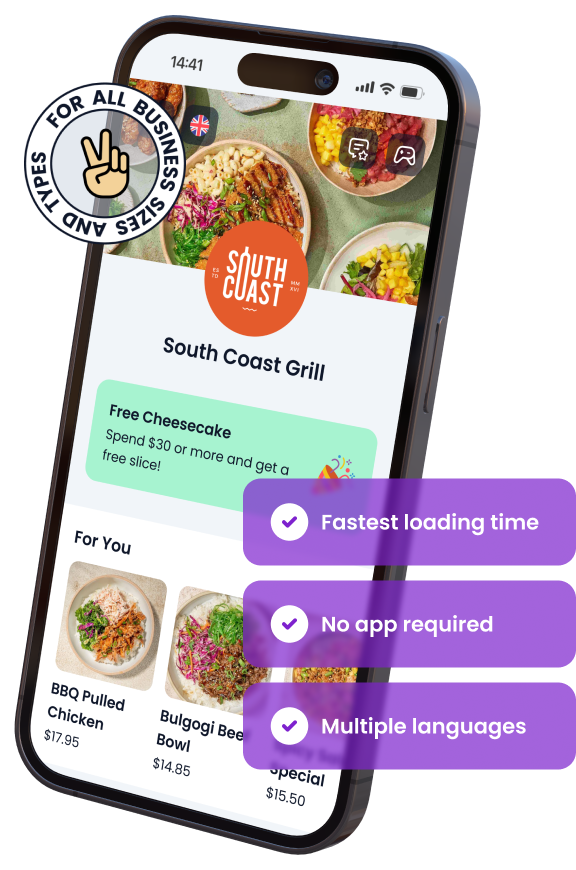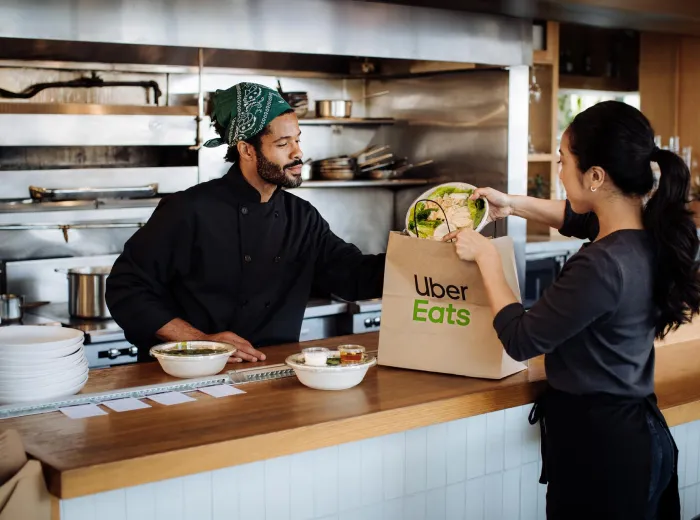

How Much Money Do Restaurant Owners Make Each Year in Riyadh?
Riyadh, the bustling capital of Saudi Arabia, has rapidly emerged as a culinary hotspot, attracting both local entrepreneurs and international chains eager to tap into its vibrant food scene. With a diverse population and a growing appetite for dining out, the restaurant industry in Riyadh presents a lucrative opportunity for business owners. However, understanding the potential earnings in this market is crucial for anyone looking to invest in or expand a restaurant in the city.
In this article, we’ll delve into the factors that influence how much money restaurant owners in Riyadh can expect to make annually. From average earnings across different types of establishments to the critical determinants of profitability, we’ll provide a comprehensive guide to help you navigate the financial landscape of owning a restaurant in Riyadh.
Would you like to listen our deep-dive conversation about this article?
Understanding the Restaurant Industry in Riyadh
Riyadh’s restaurant industry is booming, driven by a growing population, increasing disposable income, and a shift towards dining out as a lifestyle choice. To fully grasp the earnings potential for restaurant owners, it’s essential to understand the dynamics of this thriving market. This section will explore the key elements shaping Riyadh’s food and beverage sector, offering insights into what makes it such a lucrative but competitive environment.
Overview of Riyadh’s Booming Food Scene
Riyadh’s culinary landscape has experienced rapid growth, attracting a mix of traditional and modern dining concepts. Here’s what’s driving the boom:
- Population Growth: Riyadh’s population is projected to exceed 8 million by 2030, fueling demand for diverse dining options.
- Cultural Shift: An increasing number of residents, especially the younger generation, are dining out more frequently, influenced by global food trends.
- Government Initiatives: Vision 2030 has spurred growth in the hospitality sector, including restaurants, by encouraging tourism and foreign investments.
Key Factors Driving Restaurant Success in Riyadh
Several factors contribute to the success of restaurants in Riyadh, influencing their earnings potential:
- Diverse Consumer Base: Riyadh’s population includes locals, expatriates, and tourists, each with unique dining preferences.
- Strategic Location: Proximity to commercial hubs, residential areas, and tourist attractions significantly impacts foot traffic and revenue.
- Innovation in Dining Concepts: Restaurants that offer unique experiences, such as themed dining or fusion cuisines, tend to attract more customers.
Market Trends Impacting Revenue Potential
Staying ahead of market trends is crucial for restaurant owners looking to maximize their earnings:
- Rise of Healthy Eating: There’s a growing demand for health-conscious menus, including organic, vegan, and gluten-free options.
- Technology Integration: The use of digital menus, online ordering, and delivery services has become standard, enhancing customer convenience and driving sales.
- Increased Competition: As more restaurants open, particularly in popular areas, competition intensifies, making differentiation and customer loyalty key.
By understanding these critical aspects of Riyadh’s restaurant industry, potential and current owners can better navigate the market and position their businesses for success.
Average Earnings of Restaurant Owners in Riyadh
The earnings of restaurant owners in Riyadh can vary significantly depending on several factors, including the size and type of the establishment, the cuisine offered, and whether the restaurant is part of a local or international chain. In this section, we’ll explore the average income ranges for different types of restaurants in Riyadh and examine how these factors influence revenue potential.
How Much Do Small, Medium, and Large Restaurants Earn?
The size of the restaurant plays a crucial role in determining its earning potential:
- Small Restaurants: These typically include cafes, fast-food outlets, and casual dining spots with limited seating. On average, small restaurant owners in Riyadh can expect to earn between SAR 300,000 to SAR 800,000 annually.
- Medium-Sized Restaurants: These establishments often offer a wider menu and more seating. Owners of medium-sized restaurants may earn between SAR 800,000 to SAR 2 million per year.
- Large Restaurants: These include fine dining restaurants and those with extensive seating and high-end offerings. Large restaurant owners can earn upwards of SAR 2 million annually, with some top-tier establishments generating significantly more.
Income Variations by Cuisine Type
The type of cuisine a restaurant offers can also impact earnings:
- Local Cuisine: Restaurants offering traditional Saudi and Middle Eastern dishes tend to have a steady customer base, with average earnings ranging from SAR 500,000 to SAR 1.5 million annually.
- International Cuisine: Restaurants serving global cuisines like Italian, Japanese, or American can attract a diverse crowd, potentially earning between SAR 1 million to SAR 3 million annually, depending on their reputation and location.
- Specialty and Niche Cuisines: Niche restaurants offering vegan, organic, or other specialized menus may earn between SAR 600,000 to SAR 2 million, capitalizing on specific market trends and customer preferences.
Comparing Earnings: Local vs. International Chains
There is a noticeable difference in earnings between local restaurants and those that are part of international chains:
- Local Restaurants: Independent local restaurants may face more significant challenges in terms of brand recognition and marketing but often enjoy loyal customer bases. Their earnings typically fall within the SAR 400,000 to SAR 1.5 million range.
- International Chains: Restaurants that are part of global franchises generally benefit from established brand recognition, marketing support, and a consistent customer base. These factors allow international chain restaurants to earn between SAR 1.5 million to SAR 5 million annually, depending on their scale and location.
By understanding these average earnings, prospective and current restaurant owners in Riyadh can better assess their potential return on investment and plan accordingly.
Key Determinants of Restaurant Profitability
Profitability in the restaurant business hinges on a variety of factors that influence both revenue generation and cost management. Understanding these key determinants is crucial for maximizing earnings and ensuring the long-term success of a restaurant in Riyadh. In this section, we’ll explore the most significant factors that impact restaurant profitability.
How Location Affects Restaurant Revenue
Location is one of the most critical factors in determining a restaurant’s profitability:
- High-Traffic Areas: Restaurants located in busy commercial districts or near popular tourist attractions generally enjoy higher foot traffic, leading to increased revenue.
- Residential Areas: Establishments in residential neighborhoods may benefit from loyal local customers, though they might see lower overall foot traffic compared to central locations.
- Accessibility: Easy access via main roads, ample parking, and proximity to public transportation can significantly boost a restaurant’s appeal and profitability.
The Role of Menu Pricing in Earnings
Menu pricing strategies directly affect a restaurant’s revenue and profitability:
- Cost-Based Pricing: Setting menu prices based on the cost of ingredients and preparation, ensuring a reasonable profit margin. This approach is essential to cover operational expenses and generate profit.
- Value-Based Pricing: Pricing dishes based on the perceived value to customers, allowing for higher prices and potentially larger margins for unique or high-quality offerings.
- Dynamic Pricing: Adjusting prices based on demand, such as offering discounts during off-peak hours or raising prices during peak times, can help maximize revenue.
Staffing Costs and Their Impact on Profits
Labor is often one of the largest expenses for a restaurant, and effective management of staffing costs is vital for profitability:
- Wages and Salaries: Competitive wages are necessary to attract and retain skilled staff, but they must be balanced against the need to maintain healthy profit margins.
- Staffing Levels: Overstaffing leads to unnecessary labor costs, while understaffing can result in poor service and lost revenue. Finding the right balance is crucial.
- Employee Turnover: High turnover rates can increase costs due to recruitment and training expenses. Investing in employee satisfaction can reduce turnover and associated costs.
Importance of Efficient Inventory Management
Effective inventory management can significantly enhance profitability by reducing waste and ensuring that the restaurant operates efficiently:
- Inventory Turnover: Regular monitoring of inventory turnover rates helps in maintaining the right stock levels, avoiding both overstocking and stockouts.
- Waste Reduction: Implementing practices to minimize food waste, such as accurate portion control and using leftovers creatively, can improve margins.
- Supplier Relationships: Negotiating favorable terms with suppliers and maintaining good relationships can lead to cost savings on ingredients and other essential supplies.
By focusing on these key determinants, restaurant owners in Riyadh can optimize their operations and enhance profitability, ensuring a sustainable and successful business.
Costs and Expenses to Consider
Running a successful restaurant in Riyadh requires careful financial planning and management. Understanding the various costs and expenses involved is essential for maintaining profitability and ensuring the long-term viability of the business. In this section, we’ll break down the major expenses restaurant owners need to consider, from fixed costs like rent to variable costs like food and labor.
Rent and Utilities: The Hidden Costs
Rent and utilities are significant fixed costs that can heavily impact your bottom line:
- Rent: The cost of renting a restaurant space in Riyadh can vary widely depending on the location, size, and amenities. Prime locations in commercial areas or shopping districts typically command higher rents, sometimes exceeding SAR 500,000 annually.
- Utilities: Utilities, including electricity, water, and gas, are essential for daily operations. Depending on the size and type of restaurant, utilities can range from SAR 50,000 to SAR 150,000 annually.
- Service Charges: In some rental agreements, service charges for maintenance, security, and other amenities may be added to the base rent, further increasing costs.
How Labor Costs Eat into Profits
Labor costs are one of the most significant variable expenses for any restaurant:
- Wages and Salaries: In Riyadh, the cost of labor varies depending on the level of expertise required. Salaries for chefs, managers, and waitstaff can range from SAR 1,500 to SAR 10,000 per month, depending on experience and role.
- Employee Benefits: Additional costs include benefits such as health insurance, housing allowances, and transportation, which can add 20-30% to the total payroll expenses.
- Training and Development: Investing in employee training ensures better service and efficiency but also adds to the labor costs.
Food and Beverage Costs: Calculating Margins
Food and beverage costs, often referred to as the cost of goods sold (COGS), are a major expense that directly impacts profit margins:
- Food Costs: The cost of ingredients typically makes up 25-35% of a restaurant’s revenue. It’s important to manage suppliers and negotiate prices to keep these costs in check.
- Beverage Costs: Beverage costs, especially for alcohol, can vary widely. For non-alcoholic beverages, costs generally range from 10-15% of revenue, while alcoholic beverages can range from 15-25%.
- Waste Management: Reducing food waste through effective inventory management and portion control is essential for maintaining healthy margins.
Marketing and Advertising Expenditures
Marketing and advertising are crucial for attracting and retaining customers, but they also represent a significant expense:
- Traditional Advertising: Print ads, radio spots, and billboards can be costly but effective in reaching a local audience. Budgets for traditional advertising can range from SAR 20,000 to SAR 100,000 annually.
- Digital Marketing: Online advertising, including social media campaigns, SEO, and influencer partnerships, is often more cost-effective and targeted. Digital marketing budgets typically range from SAR 10,000 to SAR 50,000 per year.
- Promotions and Discounts: Offering promotions, discounts, or loyalty programs can drive traffic but also reduce profit margins if not carefully managed.
By understanding and managing these costs, restaurant owners in Riyadh can better control their expenses and maximize their profitability, ensuring that their business remains financially sustainable.
Strategies to Increase Restaurant Profits
Maximizing profits in a restaurant requires more than just attracting customers; it involves smart operational strategies, effective marketing, and continual refinement of your offerings. By implementing targeted approaches, restaurant owners in Riyadh can significantly enhance their bottom line. In this section, we’ll explore practical strategies that can boost profitability, from optimizing your menu to leveraging technology.
How to Optimize Your Menu for Higher Revenue
An optimized menu can significantly increase revenue by highlighting high-margin items and appealing to customer preferences:
- Menu Engineering: Analyze the profitability and popularity of each dish to determine which items should be promoted, re-priced, or removed. Focus on featuring high-margin items prominently.
- Seasonal Specials: Introduce seasonal dishes or limited-time offers to create urgency and encourage repeat visits. Seasonal items can often command higher prices.
- Upsell Opportunities: Design your menu to encourage upselling, such as offering add-ons or suggesting pairings like appetizers, desserts, or drinks.
The Impact of Upselling and Cross-Selling Techniques
Effective upselling and cross-selling can increase the average check size, boosting overall revenue:
- Training Staff: Train your staff to suggest higher-priced items, upgrades, or complementary dishes. Well-informed and confident staff can make upselling seem natural and helpful.
- Bundling Offers: Create bundled meal deals that offer a slight discount but increase overall sales volume. For example, a set menu with a starter, main course, and dessert at a discounted price.
- Loyalty Programs: Implement loyalty programs that reward customers for higher spending, encouraging them to opt for additional items or more expensive options.
Effective Cost-Cutting Measures
Reducing unnecessary expenses is a direct way to improve profitability without compromising quality or customer experience:
- Supplier Negotiations: Regularly review and renegotiate contracts with suppliers to ensure you’re getting the best prices. Bulk purchasing and long-term agreements can often result in discounts.
- Energy Efficiency: Invest in energy-efficient appliances and lighting to reduce utility costs. Simple measures like switching to LED bulbs or optimizing HVAC systems can lead to significant savings over time.
- Portion Control: Implement strict portion control to reduce food waste and ensure consistent costs across all dishes. Use standardized recipes and kitchen scales to maintain accuracy.
Leveraging Technology for Better Margins
Utilizing technology can streamline operations, reduce costs, and enhance customer experience, all of which contribute to higher profit margins:
- Point of Sale (POS) Systems: Modern POS systems offer detailed sales analytics, inventory management, and customer data tracking. These insights can help in making data-driven decisions to boost profitability.
- Online Ordering and Delivery: Expanding into online ordering and delivery can open up new revenue streams. Partnering with delivery platforms or creating your own online system can increase sales without the need for additional seating.
- Automation Tools: Consider using automation tools for tasks such as scheduling, payroll, and marketing. These tools reduce administrative overhead and free up time to focus on growth strategies.
By applying these strategies, restaurant owners can not only increase their profits but also build a more resilient and adaptable business.
Case Studies: What Successful Restaurant Owners Earn
Understanding how successful restaurant owners in Riyadh achieve and maintain profitability can offer valuable insights for others in the industry. By examining real-life examples, we can identify the strategies and practices that lead to financial success. In this section, we’ll look at case studies of high-performing restaurants in Riyadh, exploring their earnings and the key factors that contributed to their success, as well as lessons from those that didn’t make it.
High-Performing Restaurants in Riyadh and Their Earnings
Examining the earnings of top-performing restaurants can provide a benchmark for potential profitability:
- Case Study 1: Upscale Fine Dining
A well-known fine dining restaurant in Riyadh, located in a prime area with a capacity of 150 seats, reported annual earnings of SAR 7 million. Key factors included exceptional service, a high-end menu, and strategic marketing that targeted affluent customers. - Case Study 2: Popular Casual Dining Chain
A successful casual dining chain with multiple outlets across Riyadh earned an average of SAR 3 million per location annually. The brand’s consistency, affordable pricing, and widespread appeal contributed to its high earnings. - Case Study 3: Niche Organic Café
A niche café specializing in organic and vegan options earned SAR 1.2 million in its first year, with a steady increase in revenue due to its strong brand identity and loyal customer base, particularly among health-conscious young professionals.
Lessons from Failed Restaurants: What Went Wrong?
Understanding why some restaurants fail can be just as informative as studying success stories:
- Case Study 1: High-End Concept in a Low-Traffic Area
An ambitious high-end restaurant with a unique concept struggled to attract customers due to its location in a less frequented part of the city. Despite investing heavily in décor and marketing, it earned less than SAR 500,000 in its first year and eventually closed. - Case Study 2: Overexpansion of a Family-Owned Restaurant
A family-owned restaurant chain expanded too quickly, opening multiple locations without adequate market research. The result was stretched resources and inconsistent service, leading to a sharp decline in customer satisfaction and earnings. The chain had to close several outlets, with remaining locations earning just SAR 800,000 annually, down from SAR 1.5 million previously. - Case Study 3: Inadequate Financial Planning
A mid-range restaurant offering international cuisine failed due to poor financial management, particularly in controlling costs. Despite a promising start with earnings of SAR 1 million in the first year, rising expenses and inadequate pricing strategies led to mounting losses, ultimately forcing the business to shut down.
By analyzing both successful and failed ventures, restaurant owners can gain a deeper understanding of the factors that influence profitability, enabling them to make more informed decisions for their own businesses.
How Seasonality Affects Restaurant Earnings
Seasonality plays a significant role in the restaurant industry, influencing customer behavior, foot traffic, and overall earnings. In Riyadh, where cultural and climatic factors vary throughout the year, restaurant owners must understand these seasonal patterns to optimize their operations and revenue. This section will explore the impact of peak seasons, holidays, and weather on restaurant earnings and offer strategies for managing seasonal fluctuations.
Peak Seasons for Riyadh Restaurants
Certain times of the year see a surge in dining out, boosting restaurant revenues:
- Ramadan and Eid: During Ramadan, restaurants experience a spike in business, particularly for Iftar meals. The period leading up to Eid also sees increased dining out, with many restaurants reporting up to a 50% increase in revenue during these times.
- Winter Months: Riyadh’s cooler winter months, from November to February, encourage outdoor dining, leading to higher customer turnout. Many restaurants see a 20-30% increase in sales during this period compared to the hot summer months.
- Tourism Season: Events and festivals, such as the Riyadh Season, attract tourists and locals alike, driving traffic to restaurants. High-profile events can result in significant revenue boosts, sometimes doubling or tripling usual earnings.
Strategies for Managing Off-Season Slumps
To maintain profitability during slower periods, restaurants need to employ effective strategies:
- Special Promotions: Offering discounts, happy hours, or themed nights during off-peak times can attract customers who might otherwise stay home. This can help to stabilize revenue during quieter months.
- Menu Adjustments: Introducing seasonal dishes or limited-time offers can entice diners to visit during slower periods. For example, lighter, refreshing options during the hot summer months can appeal to customers seeking relief from the heat.
- Leveraging Delivery Services: Expanding delivery and takeout options during off-peak seasons can capture revenue from customers who prefer to dine at home, especially during extreme weather conditions.
Impact of Weather on Dining Behavior
The weather significantly influences dining patterns in Riyadh, affecting restaurant foot traffic:
- Summer Heat: During the extreme summer heat, fewer people venture out, leading to a decline in on-premise dining. Restaurants may see a 15-20% drop in foot traffic during peak summer months.
- Rainy Days: Although rain is rare in Riyadh, when it does occur, it tends to keep people indoors, resulting in lower customer turnout. On such days, delivery orders might increase, partially offsetting the decline in on-site dining.
- Cool Evenings: Conversely, cool evenings, especially in winter, can encourage outdoor dining, boosting business for restaurants with outdoor seating.
By understanding and adapting to these seasonal factors, restaurant owners in Riyadh can better manage their earnings throughout the year, ensuring steady profitability regardless of the season.
Legal and Tax Considerations
Navigating the legal and tax landscape is crucial for restaurant owners in Riyadh, as compliance with local regulations ensures smooth operations and protects the business from potential penalties. Understanding the legal requirements and tax obligations specific to the restaurant industry can help owners avoid costly mistakes and focus on growing their business. This section will cover the essential legal and tax considerations that restaurant owners need to be aware of in Riyadh.
Understanding Riyadh’s Taxation on Restaurant Income
Taxation is a key factor that impacts the profitability of restaurants, and understanding these obligations is essential:
- Value-Added Tax (VAT): Restaurants in Riyadh are subject to a 15% VAT on the goods and services they provide. This tax is typically added to the customer’s bill and must be regularly reported and remitted to the tax authorities.
- Zakat: For Saudi-owned businesses, Zakat is a form of Islamic tax based on net worth and is calculated at 2.5% annually. It is important for restaurant owners to accurately calculate and pay Zakat to remain compliant.
- Income Tax: While Saudi nationals are not subject to personal income tax, foreign-owned businesses must comply with corporate income tax regulations, which can impact the overall earnings of the restaurant.
Licensing Costs and Compliance
Obtaining the necessary licenses and adhering to local regulations is crucial for legal operation:
- Restaurant License: Every restaurant in Riyadh must obtain a restaurant license from the relevant municipal authorities. The cost of this license varies depending on the size and type of the establishment, typically ranging from SAR 10,000 to SAR 50,000.
- Health and Safety Compliance: Restaurants must adhere to strict health and safety regulations, including regular inspections. Failure to comply can result in fines or even closure. Key areas include food safety standards, hygiene practices, and fire safety measures.
- Alcohol Regulations: Unlike many other countries, the sale of alcohol is prohibited in Saudi Arabia. Restaurants must ensure that they do not engage in the sale or promotion of alcoholic beverages to avoid severe legal consequences.
Employment Laws and Worker Rights
Understanding and adhering to local employment laws is essential for maintaining a lawful and ethical workplace:
- Saudization (Nitaqat Program): The Nitaqat program requires businesses to employ a certain percentage of Saudi nationals. Non-compliance with Saudization targets can result in penalties or restrictions on hiring foreign workers.
- Worker Benefits and Contracts: Employers must provide clear contracts to all employees, outlining wages, working hours, and benefits. Additionally, compliance with regulations regarding working conditions, rest periods, and overtime pay is mandatory.
- Work Visas and Sponsorship: For foreign workers, restaurant owners must ensure that all employees have valid work visas and are sponsored correctly. Failure to comply with visa regulations can lead to fines and legal issues.
By staying informed and compliant with Riyadh’s legal and tax requirements, restaurant owners can avoid potential pitfalls and ensure their business operates smoothly and lawfully.
Frequently Asked Questions
Restaurant ownership in Riyadh comes with many questions, especially for those new to the industry or the region. This section addresses some of the most frequently asked questions to help current and prospective restaurant owners navigate the complexities of running a successful business in this dynamic market.
What is the Average ROI for a Riyadh Restaurant?
The return on investment (ROI) for restaurants in Riyadh can vary widely depending on the type, size, and location of the establishment:
- Small Restaurants: Generally, small restaurants can expect an ROI of 15-25% within the first few years, provided they are well-managed and located in a favorable area.
- Medium to Large Restaurants: These establishments, particularly those with a strong brand and consistent customer base, can see an ROI ranging from 20-35%.
- Chain Restaurants: Franchise or chain restaurants often have a higher ROI due to brand recognition and established operational systems, with an average ROI of 30-40%.
How Much Should You Reinvest into Your Business?
Reinvestment is key to sustaining and growing your restaurant business, and the amount varies depending on your goals:
- Expansion and Renovation: If you’re planning to expand or renovate, reinvesting 20-30% of your annual profits is typically recommended to ensure the business continues to attract customers and maintain its competitive edge.
- Marketing and Promotions: Allocating 10-15% of profits to marketing can help increase visibility and drive traffic, especially during slower seasons.
- Equipment and Technology Upgrades: Regularly updating kitchen equipment, POS systems, and other technology is essential. Setting aside 10-15% of profits for these upgrades can prevent costly breakdowns and inefficiencies.
Is Opening a Restaurant in Riyadh Worth the Investment?
The decision to open a restaurant in Riyadh depends on several factors, including market research, financial planning, and personal goals:
- Market Potential: Riyadh’s growing population and increasing demand for dining out present significant opportunities for new restaurants, particularly those offering unique or high-quality dining experiences.
- Competition: The restaurant industry in Riyadh is competitive, so it’s crucial to have a well-defined concept, a strong brand, and a clear target market.
- Profit Potential: With proper management and strategic planning, restaurants in Riyadh can be highly profitable, making the investment worthwhile for those prepared to meet the challenges of the market.
By addressing these common questions, prospective and current restaurant owners can gain a clearer understanding of the risks and rewards associated with operating a restaurant in Riyadh.
ABOUT THE AUTHOR
Erkin Coban
Your Customers Deserve The Best
And we got Menuviel for them.
The fastest and easy-to-use online QR menu with 12+ unique features. Choose Menuviel and elevate your service quality to the next level.
Use free for the first 30 days.

Need more? Here are some closely related topics for you.
In This Article

Free AI Tools for Restaurants
TRY NOW ➜

Enjoy discounted prices for Saudi Arabia
We adjust our subscription price for Saudi Arabia, so you enjoy all the same great features at a lower, more affordable rate.







